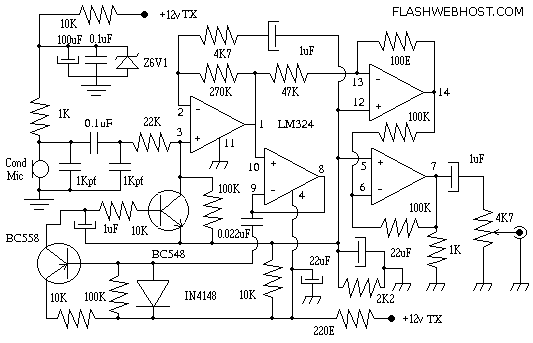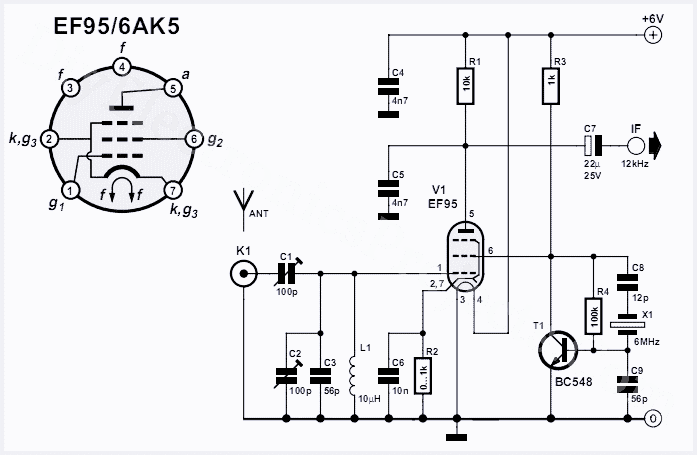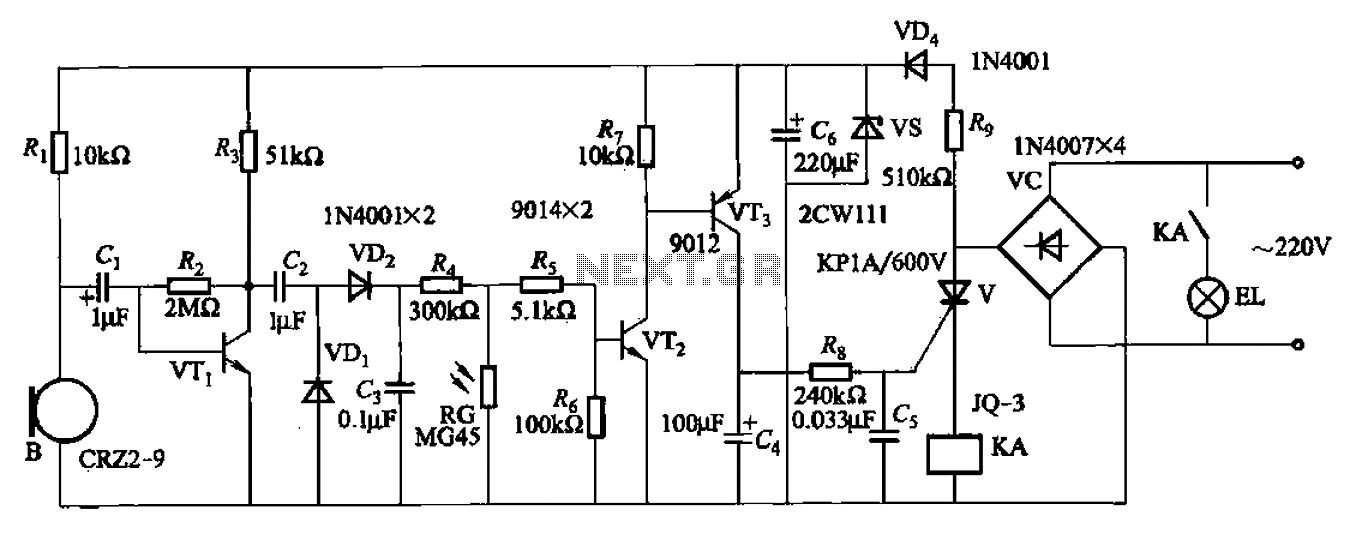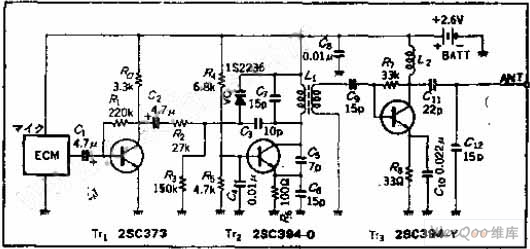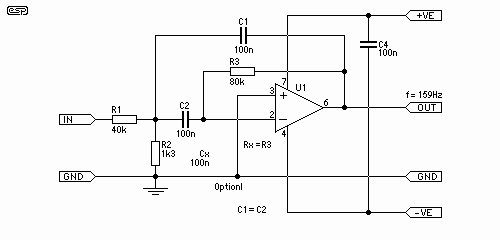
FOUR BAND CW TRANSCEIVER WITH DIRECT CONVERSION

The performance of the 80-meter CW transceiver using the phase method for sideband suppression is very good. Construction was easy with all standard electronic components available, without the need for an expensive or complex crystal filter. Almost no signals are heard on the unwanted sideband. A plan was made to create a four-band version to evaluate the performance of the phase method for sideband suppression across other amateur bands. However, this design presented several disadvantages, including the absence of a 30-meter band, frequency drift issues, inaccurate frequency readout, and compliance with current limits regarding spurious emissions. Additionally, there were significant problems with 50 Hz hum due to the audio transformers and 88 mH inductances in the filters. Consequently, a restoration was deemed necessary. The decision was made to disassemble all old printed circuit boards, retaining them as a memory, while reusing only the enclosure, which retained its original paint despite wear from intensive use in both the shack and while sailing. The aim was to develop a four-band version of the 80-meter band CW transceiver utilizing the phase method in the receiver. Important features included the addition of a 30-meter band and a simple frequency counter. The antenna signal is routed through an RF attenuator potentiometer to four preselector circuits. It was deemed simpler to create four distinct RF amplifiers rather than one with input/output switching circuits. The RF signal is split into two signals that are shifted 90 degrees out of phase (one at +45 degrees and the other at -45 degrees). Both are mixed to create audio frequencies. These two audio signals are again shifted 90 degrees out of phase (again one at +45 degrees and one at -45 degrees). When combined, the signals of one sideband are in phase, while the signals of the other sideband are 180 degrees out of phase and thus subtracted. The audio circuit includes a highly efficient audio CW filter with two bandwidths, a mute switch, audio amplifiers, and a potentiometer for low-frequency volume control. The input features a standard and useful RF attenuator. Band switching is accomplished using 1N4148 diodes, where one diode conducts while the others are blocked, maintaining a high negative blocking voltage of 12 volts. Each band has one preselector and RF preamplifier, which simplifies the design compared to a single RF amplifier with switching circuits. After the preamplifiers, 45-degree RF phase shift filters are employed, consisting of simple RC networks tuned with trimmers for approximately ±45 degrees phase shift. These filters also compensate for amplitude differences. Adjustments should be made by ear, experimenting with different trimmer settings while monitoring a signal on the suppressed sideband at the center frequency of the CW band. For optimal amplitude settings, it is possible that one network may be adjusted to +55 degrees while the other is set to -35 degrees, but the difference must remain 90 degrees. The +45 and -45 degrees phase-shifted signals are mixed to low-frequency (LF) frequencies using two mixers, which are CMOS switches from the 74HC4066 series, known for their affordability and good performance. A 5k potentiometer should be adjusted for minimum audio detection of strong broadcast stations. Following the mixers, two audio preamplifiers utilizing transistors are implemented, which outperform the op-amps used in the initial version of the four-band transceiver. The LF phase shift networks and CW filter remain unchanged from the 80-meter version. Three 500-ohm potentiometers are added to allow for fine-tuning of the CW filter bandwidth. Low-noise TL072 op-amps replace the LM358 in the design. The LF switch has been substituted with a volume potentiometer, resulting in a unique volume circuit where the gain of the LF amplifier decreases at lower volume settings. This design choice reduces both the audio amplifier noise and overall system noise. Additionally, 1N4007 diodes are included in the supply connection to the LM386 to mitigate voltage spikes.
The four-band CW transceiver design emphasizes the utility of the phase method for sideband suppression, demonstrating a robust architecture that addresses previous limitations. The modular approach of using separate preselectors and RF amplifiers for each band not only simplifies the design but also enhances performance across the specified amateur bands. The incorporation of phase-shifting filters and mixers ensures effective signal processing, while the adjustable audio components provide flexibility for user preferences. The use of modern low-noise components further improves the overall audio fidelity and operational efficiency of the transceiver. This design serves as a solid foundation for amateur radio enthusiasts seeking to expand their capabilities while maintaining a focus on simplicity and performance.The performance of the 80 meter CW transceiver using the phase method for side band suppression is very good. Construction was easy with all good obtainable standard electronic components and without the expensive or complex crystal filter.
Almost nothing is heard on the unwanted side band. Therefore I had the plan to make a four band version to s ee how the performance of the phase method for suppression of a side band is for other amateur bands. But it had a lot of disadvantages. No 30 meter band, some frequency drift, no accurate frequency read out, a double side band direct conversion receiver, spurious emissions did not comply with the current limits.
There were a lot of problems with 50 Hz hum due to the audio transformers and 88 mH inductances in the filters. Therefore, it was time for a restoration. I decided to dismount all the old printed circuit boards and keep them as a memory. Only the enclosure is used again, the damaged paint due to the intensive use in the shack and mobile while sailing is left in original state.
It should become a four band version of the 80 meter band CW transceiver with the phase method used in the receiver. Adding the 30 meter band and also a simple frequency counter were the most important wishes. The antenna signal is routed through a RF attenuator potentiometer to the four preselector circuits. It was easier to make four different RF amplifier than one with input / output switching circuits. The RF signal is split into two signals that are shifted 90 degrees out of phase (one plus 45 and one minus 45 degrees).
Both are mixed to audio frequencies. The two audio signals are again shifted 90 degrees out of phase (again one plus 45 and one minus 45 degrees). When we add the two signals, the signals of one side band are in phase, the signals of the other side band are 180 degrees out of phase and substracted.
In the audio circuit you will find a very efficient audio CW filter with two bandwidths, a mute switch and audio amplifiers plus a potentiometer for LF volume control. At the input, you will find the very standard and useful RF attenuator. Bandswitching is done by the diodes 1N4148. One diode conducts, the others are blocked and have a high negative blocking voltage of 12 volt. There is one preselector plus RF preamplifier per band. This was easier than one RF amplifier with switching circuits. After the preamplifiers we have the 45 degrees RF phase shift filters. It are simple RC networks, all tuned with the trimmers for approximately plus and minus 45 degrees phase shift.
They also compensate for amplitude differences. Adjust them by ear, try different trimmer settings while adjusting the other while listening to a signal on the suppressed side band at centre frequency of that CW band. For the best settings for amplitude, it is possible that one network is plus 55 degrees, the other minus 35 degrees, but the difference should be 90 degrees.
The plus and minus 45 degrees phase shifted signals are mixed to LF frequencies by two mixers. These mixers are CMOS switches of a 74HC4066, very cheap and performance is good. Adjust the 5k potentiometer for minimum audio detection of strong broadcast stations. The mixers are followed by two audio preamplifiers with transistors. They perform better than the op-amps in the first version of the four band transceiver. The LF phase shift networks and CW filter are the same as that of the 80 meter version. Three potentiometers of 500 ohm are added to have the possibility of fine tuning (narrower or wider) of the CW filter. Low noise TL072 op-amps are used instead of the LM358. The LF switch is replaced by a volume potentiometer. The volume circuit is unusual, but in this way the gain of the LF amplifier decreases at lower volume settings.
The advantage is that also the noise of the audio amplifier decreases. The diodes 1N4007 are added in the supply connection of the LM386 to lower the volta 🔗 External reference
The four-band CW transceiver design emphasizes the utility of the phase method for sideband suppression, demonstrating a robust architecture that addresses previous limitations. The modular approach of using separate preselectors and RF amplifiers for each band not only simplifies the design but also enhances performance across the specified amateur bands. The incorporation of phase-shifting filters and mixers ensures effective signal processing, while the adjustable audio components provide flexibility for user preferences. The use of modern low-noise components further improves the overall audio fidelity and operational efficiency of the transceiver. This design serves as a solid foundation for amateur radio enthusiasts seeking to expand their capabilities while maintaining a focus on simplicity and performance.The performance of the 80 meter CW transceiver using the phase method for side band suppression is very good. Construction was easy with all good obtainable standard electronic components and without the expensive or complex crystal filter.
Almost nothing is heard on the unwanted side band. Therefore I had the plan to make a four band version to s ee how the performance of the phase method for suppression of a side band is for other amateur bands. But it had a lot of disadvantages. No 30 meter band, some frequency drift, no accurate frequency read out, a double side band direct conversion receiver, spurious emissions did not comply with the current limits.
There were a lot of problems with 50 Hz hum due to the audio transformers and 88 mH inductances in the filters. Therefore, it was time for a restoration. I decided to dismount all the old printed circuit boards and keep them as a memory. Only the enclosure is used again, the damaged paint due to the intensive use in the shack and mobile while sailing is left in original state.
It should become a four band version of the 80 meter band CW transceiver with the phase method used in the receiver. Adding the 30 meter band and also a simple frequency counter were the most important wishes. The antenna signal is routed through a RF attenuator potentiometer to the four preselector circuits. It was easier to make four different RF amplifier than one with input / output switching circuits. The RF signal is split into two signals that are shifted 90 degrees out of phase (one plus 45 and one minus 45 degrees).
Both are mixed to audio frequencies. The two audio signals are again shifted 90 degrees out of phase (again one plus 45 and one minus 45 degrees). When we add the two signals, the signals of one side band are in phase, the signals of the other side band are 180 degrees out of phase and substracted.
In the audio circuit you will find a very efficient audio CW filter with two bandwidths, a mute switch and audio amplifiers plus a potentiometer for LF volume control. At the input, you will find the very standard and useful RF attenuator. Bandswitching is done by the diodes 1N4148. One diode conducts, the others are blocked and have a high negative blocking voltage of 12 volt. There is one preselector plus RF preamplifier per band. This was easier than one RF amplifier with switching circuits. After the preamplifiers we have the 45 degrees RF phase shift filters. It are simple RC networks, all tuned with the trimmers for approximately plus and minus 45 degrees phase shift.
They also compensate for amplitude differences. Adjust them by ear, try different trimmer settings while adjusting the other while listening to a signal on the suppressed side band at centre frequency of that CW band. For the best settings for amplitude, it is possible that one network is plus 55 degrees, the other minus 35 degrees, but the difference should be 90 degrees.
The plus and minus 45 degrees phase shifted signals are mixed to LF frequencies by two mixers. These mixers are CMOS switches of a 74HC4066, very cheap and performance is good. Adjust the 5k potentiometer for minimum audio detection of strong broadcast stations. The mixers are followed by two audio preamplifiers with transistors. They perform better than the op-amps in the first version of the four band transceiver. The LF phase shift networks and CW filter are the same as that of the 80 meter version. Three potentiometers of 500 ohm are added to have the possibility of fine tuning (narrower or wider) of the CW filter. Low noise TL072 op-amps are used instead of the LM358. The LF switch is replaced by a volume potentiometer. The volume circuit is unusual, but in this way the gain of the LF amplifier decreases at lower volume settings.
The advantage is that also the noise of the audio amplifier decreases. The diodes 1N4007 are added in the supply connection of the LM386 to lower the volta 🔗 External reference
